While affiliate marketing is not my main gig, I do generate 5 figures annually in affiliate revenue. As you can imagine, this comes from a variety of sources. Like other affiliate marketers, I blog, have a podcast and do YouTube videos. But, in addition to all of that, are you strategically using Facebook for affiliate marketing?
Facebook remains an essential platform for affiliate marketers looking to drive traffic and conversions. With 75.8% of affiliate marketers using Facebook to generate sales and traffic, it’s clear this social media giant continues to deliver results.
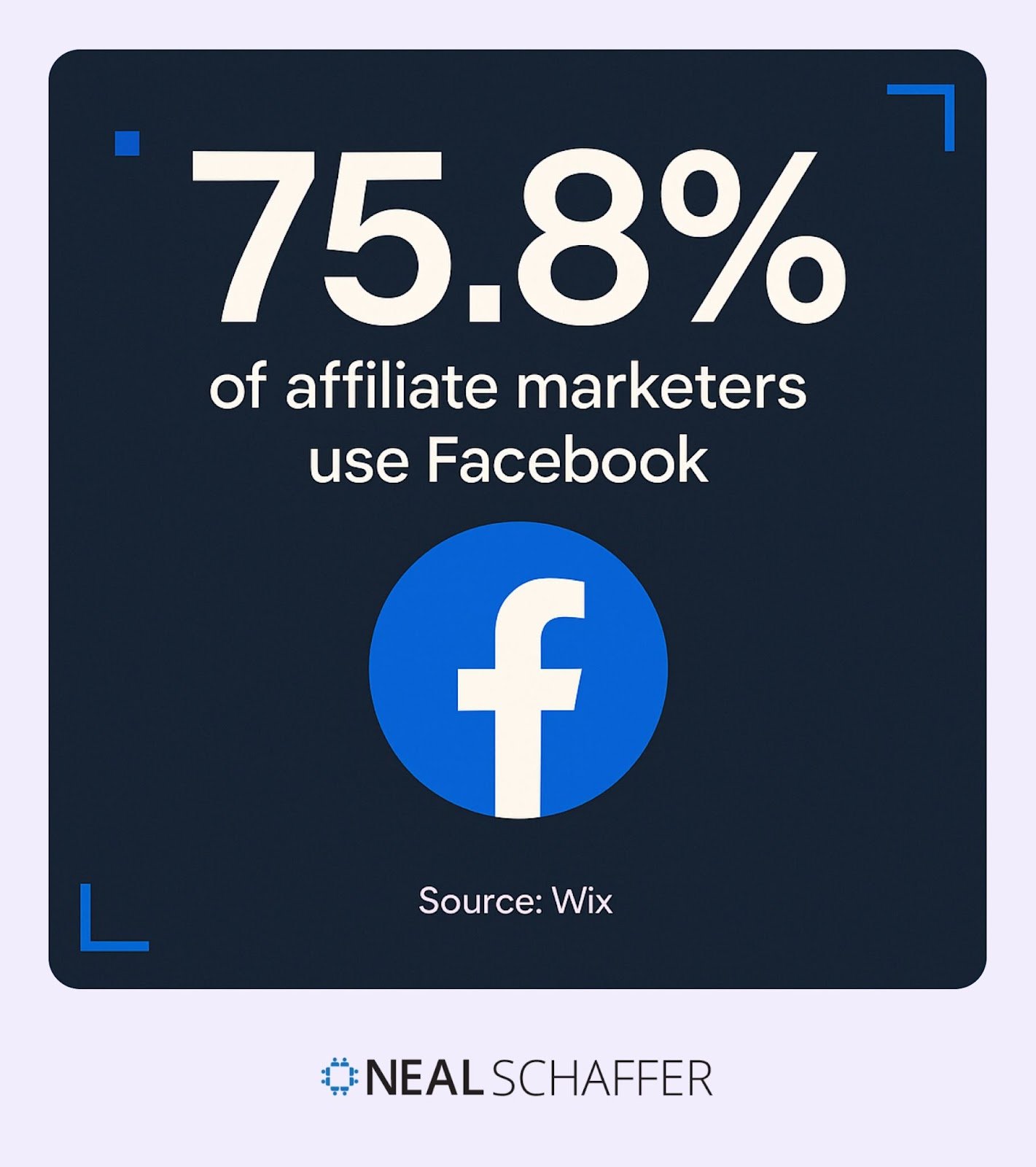
But simply having a Facebook presence isn’t enough. Success requires a strategic approach, content optimization, and advertising know-how that aligns with both platform policies and user expectations.
As the affiliate marketing industry continues to expand at an 8% CAGR and is projected to exceed $31 billion by 2031, the opportunity for growth is substantial. Yet many affiliate marketers struggle to cut through the noise, comply with Facebook’s evolving policies, and convert their audience into customers.
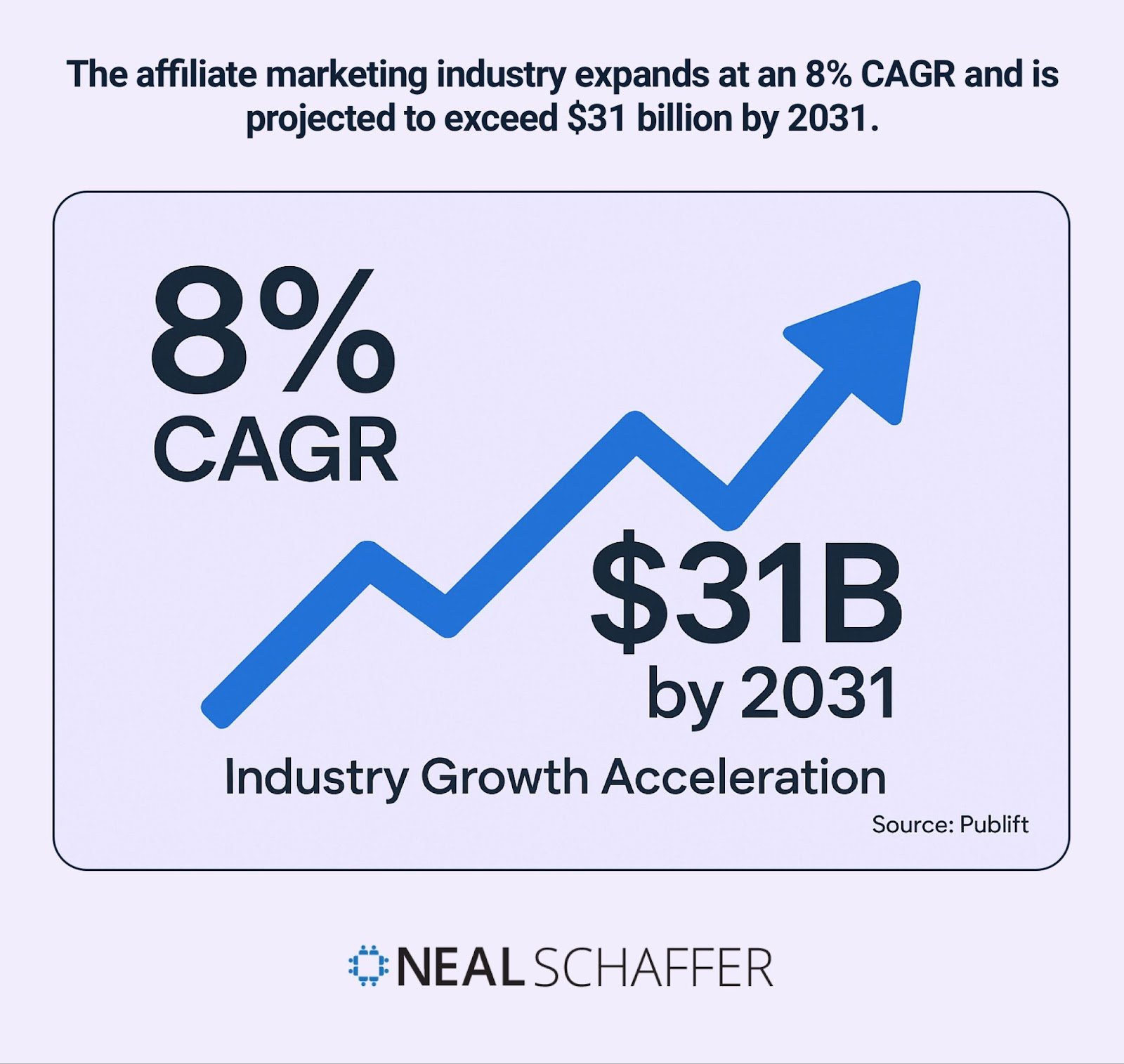
In this guide, I’ll walk you through proven strategies to maximize your Facebook presence for affiliate marketing success. From setting up your strategy and creating converting content to leveraging ads and measuring results, you’ll discover actionable techniques to boost your affiliate revenue through Facebook.
Understanding Facebook’s Role in Affiliate Marketing
Facebook offers unparalleled opportunities for affiliate marketers. Its massive user base, sophisticated targeting options, and diverse content formats make it ideal for promoting affiliate offers. Yet success requires understanding how Facebook specifically serves affiliate marketing goals.
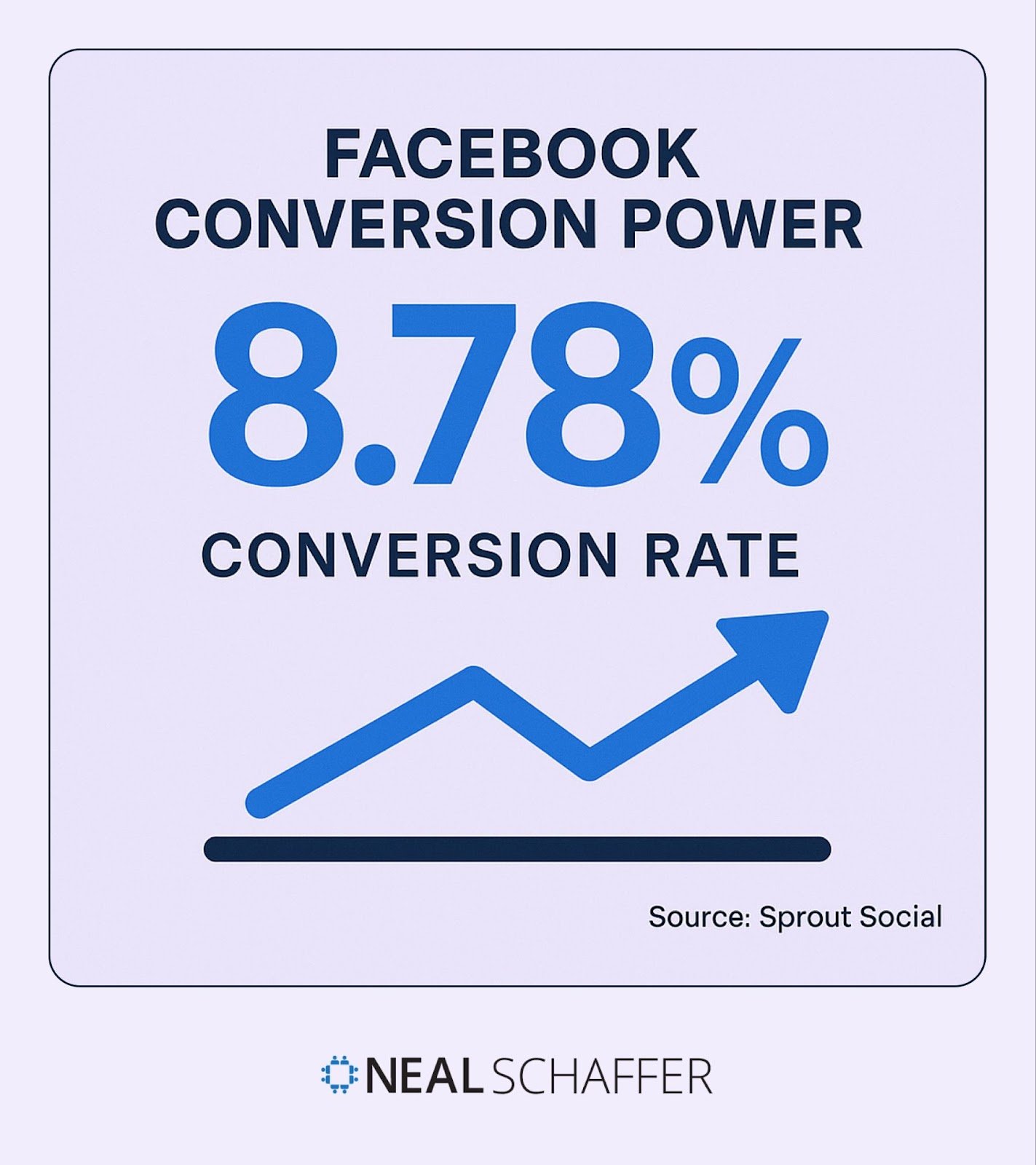
Facebook ads achieve an average conversion rate of 8.78% across industries, making it one of the most effective platforms for turning prospects into customers. This high conversion potential explains why 40% of marketers rank Facebook among their top three ROI drivers.
The platform’s versatility allows affiliate marketers to implement various strategies—from organic content and groups to highly targeted advertising campaigns. This flexibility enables both new and experienced affiliates to find approaches that work for their specific offers and audience.
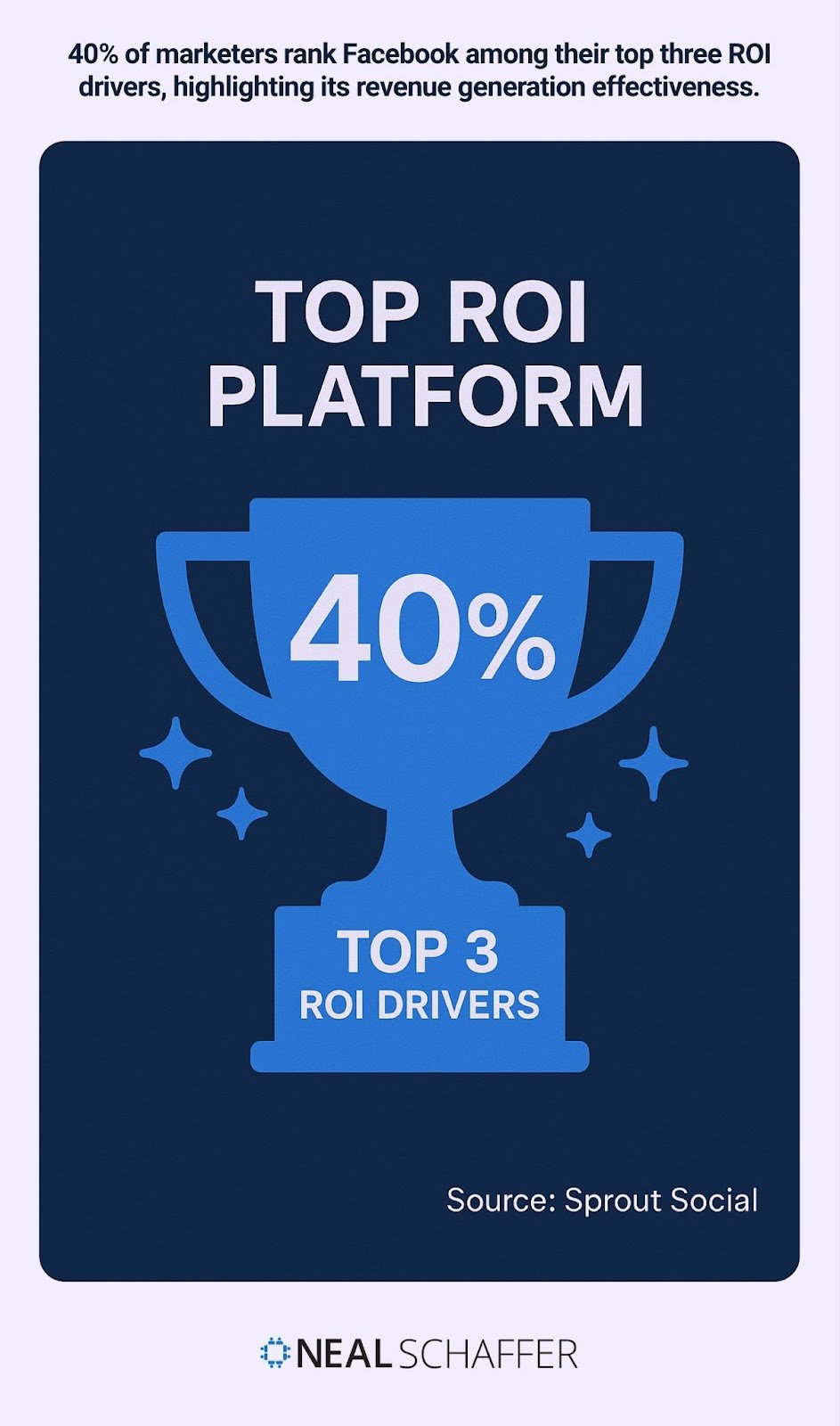
Why Facebook Dominates Affiliate Marketing
Facebook’s dominance in affiliate marketing stems from several key advantages. First, its massive user base provides access to virtually any demographic or interest group. With billions of active users, your potential customer base is likely already engaged on the platform.
Second, Facebook’s algorithm excels at matching content with interested users. This means your affiliate content can reach people most likely to engage with it, improving your conversion opportunities.
Third, the platform allows for relationship building before pitching affiliate offers. This trust-building process is critical since 58% of brands using affiliate marketing report increased awareness as a primary benefit.
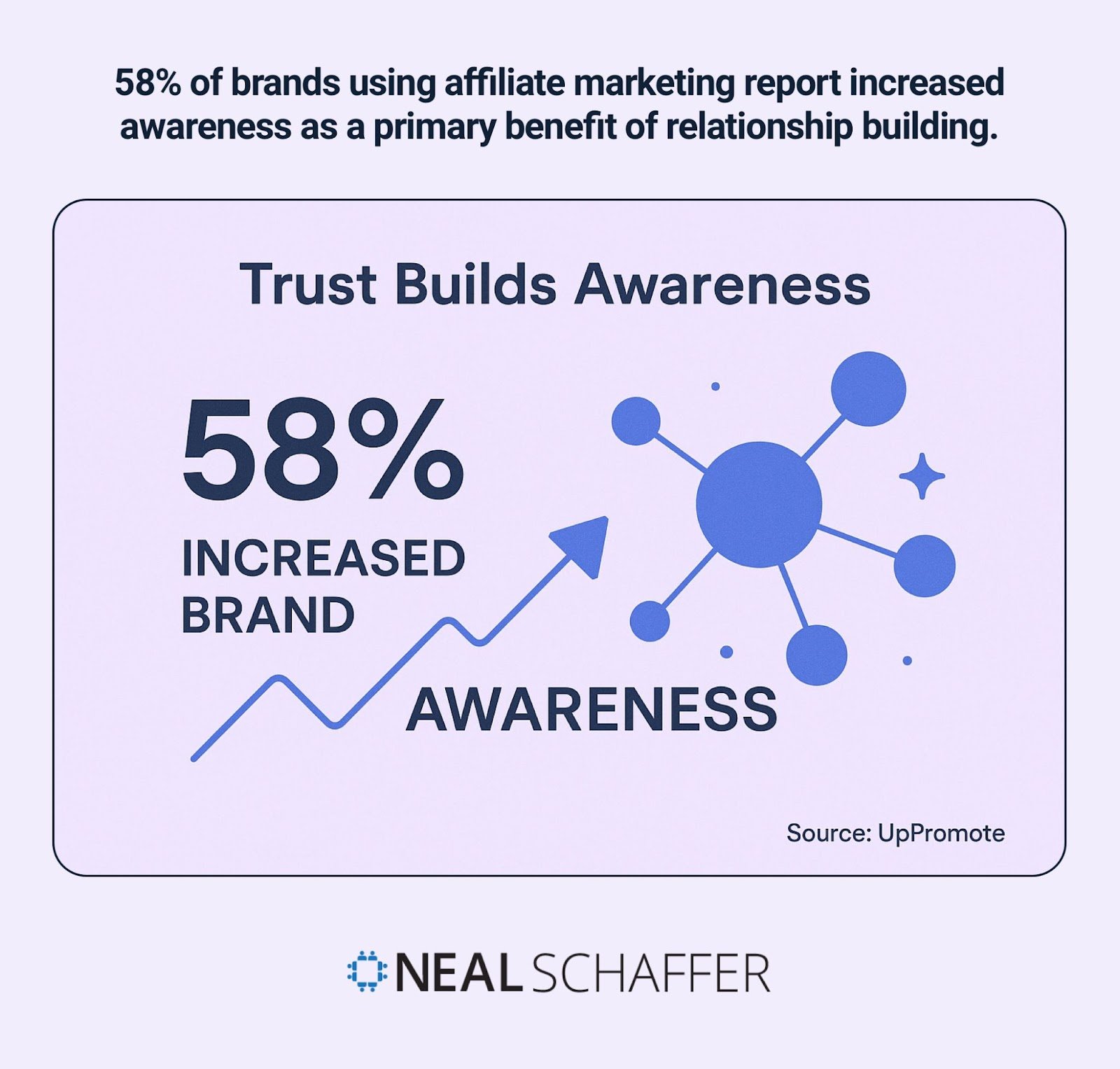
Key Facebook Features for Affiliate Marketers
Facebook offers several features that particularly benefit affiliate marketers when used strategically. The table below highlights these key features and how you can leverage them effectively in your affiliate marketing campaigns.
| Feature | Benefit for Affiliate Marketers | Best Practices |
|---|
| Business Page | Establishes professional presence | Optimize with keywords, clear description, and affiliate niche focus |
| Groups | Builds community and trust | Provide value first, promote offers selectively |
| Stories | Creates urgency and showcases products | Use for time-limited offers and behind-the-scenes content |
| Messenger | Enables direct communication | Offer support and personalized recommendations |
Understanding these features allows you to create a multi-faceted approach to your Facebook affiliate marketing strategy. Each element serves different purposes in your customer’s journey from awareness to conversion.
Common Challenges and How to Overcome Them
Affiliate marketers face several obstacles when using Facebook. Being aware of these challenges helps you develop strategies to address them proactively:
- Policy Restrictions: Facebook maintains strict policies about affiliate marketing, particularly around certain niches.
Solution: Thoroughly read Facebook’s current policies and focus on value-added content rather than direct promotion. - Organic Reach Limitations: Facebook’s algorithm limits organic reach for promotional content.
Solution: Invest in building engagement first, and use paid promotion strategically. - Attribution Difficulties: Tracking conversions from Facebook can be challenging.
Solution: Implement proper tracking tools and use unique URLs for different content pieces. - Ad Fatigue: Audiences quickly tire of seeing the same promotions.
Solution: Regularly refresh creative assets and test different approaches to keep content fresh.
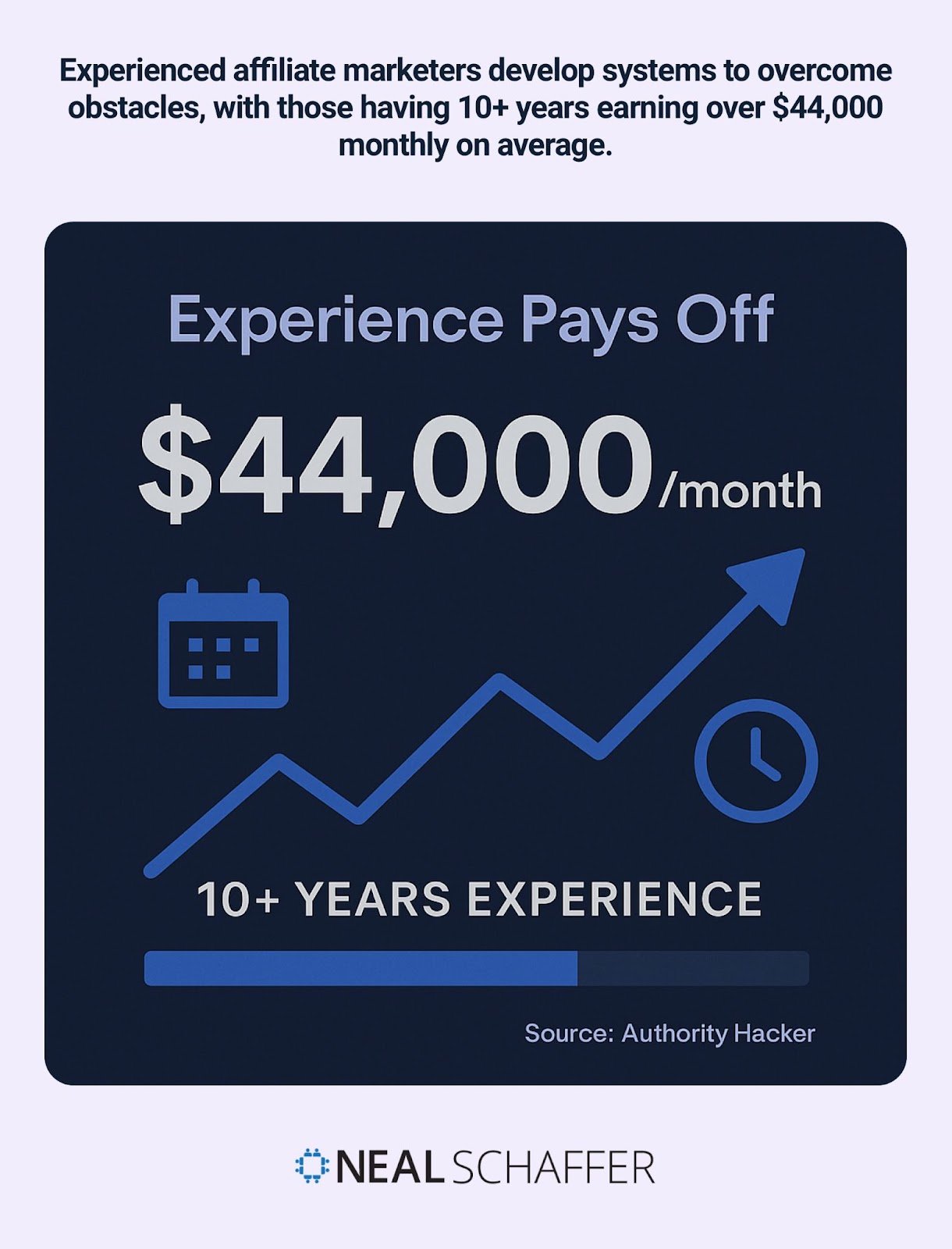
Experienced affiliate marketers develop systems to overcome these obstacles. Those with 10+ years in the industry earn over $44,000 monthly on average, showing that persistence pays off.
Setting Up Your Facebook Strategy for Affiliate Success
A successful Facebook affiliate marketing approach starts with proper foundation and strategy. Without clear goals and proper setup, even the best promotional tactics will fall short. Let’s examine how to build this foundation.
The affiliate marketing landscape on Facebook continues to evolve. Anticipating future trends matters—especially considering AI is expected to influence 50% of digital marketing strategies in 2025. Your strategy should be flexible enough to incorporate emerging technologies and approaches.
Before creating your first post or running your first ad, spend time developing a comprehensive strategy that aligns with both your affiliate goals and Facebook’s environment.
Defining Your Affiliate Marketing Goals
Clear goals guide all your Facebook affiliate marketing activities. Specific, measurable objectives help you track progress and adjust strategies when needed. Consider these potential goals in the table below.
| Goal Type | Example Metrics | Timeframe |
|---|
| Traffic Generation | Click-through rate, total visitors | Short-term (days to weeks) |
| Lead Collection | Email sign-ups, messenger subscribers | Medium-term (weeks to months) |
| Conversion Optimization | Conversion rate, total sales | Medium-term (weeks to months) |
| Brand Building | Engagement rate, audience growth | Long-term (months to years) |
Your goals should align with your position in the affiliate marketing journey. New affiliates might focus on audience building, while established marketers may prioritize conversion optimization or scaling successful campaigns.
Trying to Keep Up with Digital Marketing?
Just released: my new book to help small businesses, entrepreneurs, and marketers master digital marketing in today’s digital-first world.
Drawing on my Fractional CMO experience, Digital Threads simplifies complex strategies into clear, actionable steps for success.
Transform your business today—grab your copy! Click the cover or button below to buy on Amazon.
Creating a Facebook Business Page Optimized for Affiliate Marketing
Your Facebook Business Page serves as your affiliate marketing hub. Creating a Facebook business page optimized for affiliate marketing increases visibility and credibility with your target audience.
Start with a clear, benefit-focused page name that reflects your niche or the value you provide. Avoid generic names like “Affiliate Products” that might trigger Facebook’s promotional filters or fail to connect with your audience.
Your page description should focus on the benefits you provide rather than the products you promote. For example, instead of “I promote fitness products,” try “I help busy professionals find effective fitness solutions that fit their lifestyle.”
Create a content calendar that includes:
- Educational content about your niche
- Engaging questions and discussions
- Success stories and testimonials
- Occasional promotional posts (less than 20% of total content)
- Timely content tied to seasons, holidays, or current events
This mix helps you build authority while avoiding over-promotion that could alienate your audience or trigger Facebook restrictions.
Building Your Audience Profile
Understanding exactly who you’re targeting makes every other aspect of Facebook affiliate marketing more effective. Detailed audience profiles guide your content creation, ad targeting, and engagement strategies.
| Audience Element | Questions to Answer | How to Research |
|---|
| Demographics | Age, gender, location, income, education? | Facebook Insights, affiliate program data |
| Psychographics | Values, interests, lifestyle choices? | Facebook Interest targeting, audience surveys |
| Pain Points | What problems need solving? | Comments analysis, direct questions, industry research |
| Buying Behavior | Research habits, price sensitivity? | Test campaigns, competitive analysis |
To enhance your targeting precision, create multiple audience segments based on different combinations of these factors. This allows you to tailor both organic content and paid promotions to specific audience needs and preferences.
For example, if you promote fitness products, you might have separate strategies for beginners versus advanced fitness enthusiasts, or for those primarily interested in weight loss versus muscle building.
Effective Content Strategies for Facebook Affiliate Marketing
Content forms the core of your Facebook affiliate strategy. Quality, relevance, and strategic distribution determine whether your audience engages with your affiliate offers or scrolls past them.
Creating effective content requires balancing value delivery with promotional elements. Your audience must receive enough genuine benefit to stay engaged, while your content still needs to guide them toward affiliate offers.
This balance is achievable through strategic content planning and careful execution, regardless of your niche or affiliate products.
Types of Content That Drive Affiliate Conversions
Different content formats serve various purposes in your affiliate marketing funnel. Incorporating diverse content types keeps your page fresh and addresses different audience preferences.
For product reviews specifically, consider using this framework to maintain credibility with your audience while effectively promoting affiliate products:
| Review Element | What to Include | What to Avoid |
|---|
| Balanced Perspective | Both pros and cons of the product | One-sided, overly positive reviews |
| Personal Experience | Specific, detailed usage examples | Vague, general statements |
| Visual Proof | Photos/videos of actual product use | Stock images only |
| Benefit Focus | How features translate to user benefits | Technical specifications without context |
Remember that transparency builds trust. Always disclose your affiliate relationships clearly in your content to maintain audience trust and comply with regulations.
Creating Engaging Posts Without Violating Facebook Policies
Facebook’s policies regarding affiliate marketing have become increasingly strict. Creating compliant content requires understanding these guidelines and finding creative ways to work within them.
Key policy areas to be aware of include disclosure requirements, landing page quality, prohibited content categories, and text-to-image ratio requirements for ads.
Instead of direct affiliate links, consider these compliant approaches:
- Link to your own content (blog post, review) that contains affiliate links
- Use a two-step process where interested users message you for details
- Create a landing page that provides value before introducing affiliate offers
- Use a link shortener or redirect that complies with Facebook’s policies
- Focus on building an email list where you can promote more directly
When creating content, emphasize your role as an information provider rather than just a promoter. This positioning helps both with policy compliance and audience receptivity.
Balancing Promotional and Value-Added Content
The right balance between promotional and value-added content builds trust while driving affiliate sales. The 80/20 rule provides a good starting point: 80% value-focused content and 20% promotional content.
Value-focused content might include how-to guides, industry news, tips and tricks, entertainment related to your niche, and community-building posts that encourage engagement.
Even your promotional content should provide value. Consider approaches like problem-solution frameworks, where you first discuss a common issue before introducing an affiliate product as one potential solution.
Tracking engagement metrics helps refine your content mix over time. Pay attention to which content types generate the most meaningful interactions, and adjust your strategy accordingly.
Facebook Advertising for Affiliate Marketers
While organic strategies form the foundation of Facebook affiliate marketing, strategic advertising amplifies results and accelerates growth. Facebook’s advanced targeting capabilities make it particularly valuable for affiliate marketers seeking to reach specific audiences.
Effective Facebook advertising for affiliates requires understanding the platform’s ad types, targeting options, and optimization strategies. This knowledge helps you create campaigns that drive traffic and conversions while maintaining acceptable costs.
Ad Types That Work Best for Affiliate Offers
Facebook offers various ad formats, each with strengths for affiliate marketing. Facebook ad examples show that choosing the right format depends on your offer, audience, and marketing objectives.
| Ad Format | Best For | Affiliate Marketing Application |
|---|
| Image Ads | Simple offers with visual appeal | Showcase product benefits with compelling visuals |
| Video Ads | Demonstrating products in action | Product reviews, tutorials, before/after results |
| Carousel Ads | Multiple products or features | Compare different options or show various benefits |
| Collection Ads | E-commerce products | Showcase multiple items from the same affiliate program |
For example, if you’re promoting fitness equipment, a video ad demonstrating exercises with the equipment would likely outperform a static image. Similarly, financial products might benefit from carousel ads that outline different features or benefits.
Targeting Strategies to Reach Potential Buyers
Facebook’s targeting capabilities allow precise audience selection. For affiliate marketing, these targeting approaches prove most effective:
When implementing these strategies, consider whether Facebook ads are worth the investment for your specific affiliate offers. Testing different targeting combinations helps identify the most profitable approach.
For new campaigns, start with broader targeting and sufficient budget to gather data. Once you identify what works, narrow your focus to the most responsive segments to improve ROI.
You can leverage Facebook ads tools to streamline campaign management and gain deeper insights into what’s working. Regular analysis helps identify winning combinations to scale and underperforming elements to modify or eliminate.
Successful Facebook advertising requires ongoing measurement and optimization. These metrics matter most for affiliate marketers:
| Metric | What It Measures | Target Benchmark |
|---|
| Click-Through Rate (CTR) | Ad engagement effectiveness | Industry average: 0.9% |
| Cost Per Click (CPC) | Traffic acquisition cost | Depends on niche ($0.50-$2.00) |
| Conversion Rate (CR) | Traffic quality and offer match | 1-5% for affiliate offers |
| Return on Ad Spend (ROAS) | Overall campaign profitability | Minimum 2x for sustainability |
To optimize performance, implement a systematic testing approach that includes testing different ad creatives, audience segments, landing pages, bidding strategies, and ad scheduling. This methodical approach helps identify the most effective elements to scale.
Advanced Facebook Strategies for Affiliate Marketing
Once you’ve mastered the fundamentals, advanced strategies can significantly increase your affiliate marketing results on Facebook. These approaches help you build deeper relationships, gain better insights, and scale successful campaigns.
These strategies typically require more effort to implement but deliver stronger results by addressing common limitations of basic affiliate marketing approaches. They help you stand out in a crowded marketplace and create sustainable affiliate revenue streams.
Using Facebook Groups to Build Trust and Drive Sales
Facebook Groups create community around your affiliate niche, fostering trust that leads to higher conversion rates. Unlike Business Pages, Groups facilitate multi-way conversations between members, not just from you to your audience.
How to create a group on Facebook that drives affiliate sales involves striking the right balance between community building and promotion. The trust developed through genuine interaction makes members more receptive when you do share affiliate recommendations.
For optimal results, consider this content ratio for Groups:
- 60% discussion starters and community-building content
- 30% educational content related to your niche
- 10% promotional content with affiliate offers
This approach prioritizes relationship building while still creating opportunities for affiliate promotion in a context where members are more likely to be receptive.
Leveraging Facebook Analytics for Better Results
Facebook provides robust analytics that help refine your affiliate marketing strategy. Using Facebook analytics tools enables data-driven decisions that improve your affiliate marketing effectiveness.
| Analytics Focus | Key Insights | Application to Affiliate Marketing |
|---|
| Audience Demographics | Who engages most with your content | Refine targeting and product selection |
| Content Performance | Which posts drive clicks and engagement | Create more high-performing content types |
| Conversion Patterns | When and how conversions occur | Optimize posting times and promotion strategy |
| Engagement Trends | Patterns in audience interaction | Adapt content strategy to audience preferences |
When analyzing data, look beyond surface metrics like likes and shares. Focus on metrics that correlate with actual affiliate conversions, such as link clicks, time spent on landing pages, and conversion rates from different content types.
Scaling Your Affiliate Business with Facebook
Once you’ve identified successful strategies, systematic scaling increases your affiliate revenue without proportionally increasing your workload. Effective scaling combines automation, outsourcing, and strategic expansion.
Consider these approaches to scale your Facebook affiliate marketing:
- Content templates: Create frameworks for different post types that you can adapt quickly
- Scheduling tools: Batch-create content and schedule for optimal posting times
- Team expansion: Hire specialists for content creation, engagement, or ad management
- Audience expansion: Target adjacent interests or demographics with proven offers
- Cross-platform synergy: Leverage content across multiple platforms for greater reach
As you scale, maintain what made your affiliate promotions successful initially. Many marketers lose effectiveness by diluting their unique approach or value proposition during expansion.
Consistent measurement and optimization separate successful affiliate marketers from those who struggle to generate sustainable results. Creating systems to track performance and improve over time ensures continued growth of your Facebook affiliate business.
Both short-term metrics (like click-through rates) and long-term indicators (like customer lifetime value) provide valuable insights. Together, they create a complete picture of your Facebook affiliate marketing performance.
Key Metrics for Facebook Affiliate Marketing
Tracking the right metrics helps you understand what’s working and where improvement opportunities exist. Focus on these key performance indicators:
| Metric Category | Specific Metrics | What They Tell You |
|---|
| Engagement Metrics | Reach, reactions, comments, shares | Content relevance and audience interest |
| Traffic Metrics | Clicks, CTR, traffic source breakdown | Promotional effectiveness and user journey |
| Conversion Metrics | Conversion rate, EPC, AOV | Offer relevance and landing page effectiveness |
| Financial Metrics | Revenue, profit margin, ROAS | Overall business performance and sustainability |
Create a simple dashboard that tracks these metrics weekly or monthly to identify trends. This consistent monitoring helps you spot potential issues before they significantly impact performance.
Understanding how to calculate engagement rate correctly provides insight into your content’s resonance with your audience. This foundational metric often predicts downstream conversion performance.
Proper tracking tools ensure you capture accurate data for decision-making. These tools help overcome the attribution challenges common in affiliate marketing:
When implementing influencer marketing alongside affiliate promotions, use separate tracking links to measure each channel’s performance accurately.
The right combination of tools creates a complete picture of your customer’s journey from Facebook interaction to affiliate purchase. This visibility helps you identify and eliminate bottlenecks in your conversion process.
Testing and Optimization Strategies
Continuous testing and optimization improve results over time. Implement these testing approaches for your Facebook affiliate marketing:
| Test Type | What to Test | How to Measure |
|---|
| A/B Testing | Headlines, images, CTA buttons | CTR, conversion rate |
| Content Format Testing | Video vs. image vs. text posts | Engagement rate, click-through |
| Offer Testing | Different affiliate products or programs | EPC, conversion rate |
| Audience Testing | Different targeting parameters | ROAS, cost per acquisition |
Successful testing requires testing one variable at a time, gathering sufficient data before drawing conclusions, documenting results for future reference, implementing winning variations quickly, and continuously testing new ideas against current winners.
By implementing a systematic testing program, you create a cycle of continuous improvement in your Facebook affiliate marketing performance.

Conclusion
Facebook remains a powerful platform for affiliate marketers who approach it strategically. By understanding the platform’s unique advantages, creating value-focused content, and implementing targeted advertising, you can build a sustainable affiliate marketing business through Facebook.
The statistics underscore Facebook’s continued relevance—with 75.8% of affiliate marketers using it to drive sales and traffic, and an average conversion rate of 8.78% across industries. These numbers confirm what successful affiliates already know: Facebook delivers results when used correctly.
As the affiliate marketing industry continues growing toward its projected $31+ billion valuation by 2031, those who master Facebook marketing will be positioned to capture a significant share of this expanding market. The combination of organic strategies and paid advertising creates a powerful system for affiliate success.
Start by implementing the foundational elements outlined in this guide: create a strategic plan, develop value-focused content, build community, and track your results. Then gradually incorporate more advanced techniques as you gain experience and data.
Remember that consistency and adaptation are key. The Facebook platform and affiliate marketing landscape will continue evolving, but the fundamental principles of providing value, building relationships, and strategic promotion remain constant.
What strategy will you implement first to improve your Facebook affiliate marketing results?
Actionable advice for your digital / content / influencer / social media marketing.
Join 13,000+ smart professionals who subscribe to my regular updates.